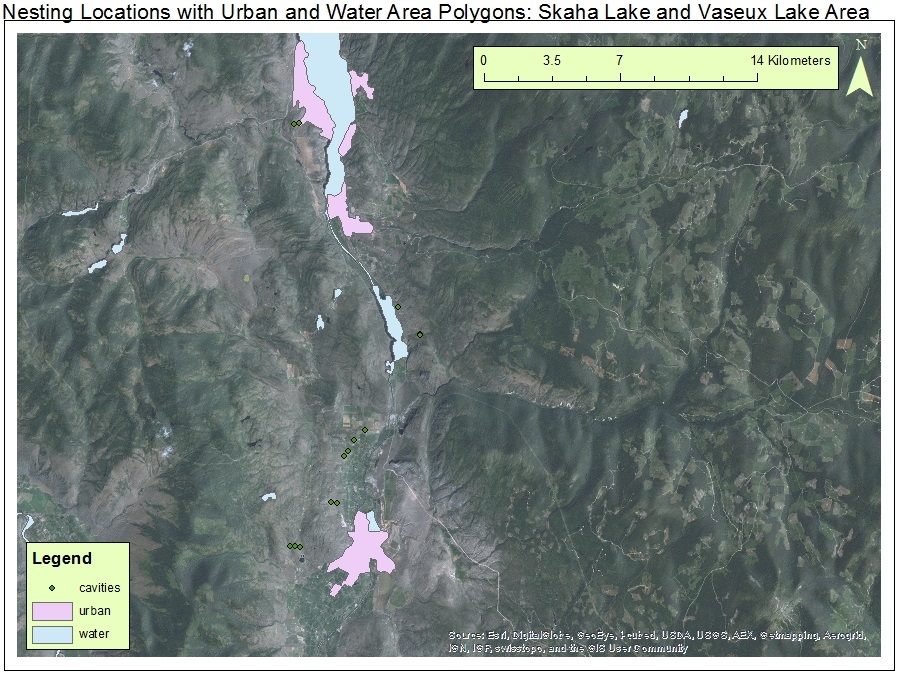Discussion
Let's talk about that.

Assuming the sample group can be extrapolated and is a good indicator of all the nests in the area, the Lewis’s Woodpecker in British Columbia experience a wide range of territory spread. This is also reflected in various studies that indicate ranges from the near vicinity of their nests (Bock, 1970) to a range of 15 acres (Thomas et al., 1979). However, there is no evidence that Lewis’s Woodpecker has a minimum range required for its nest in an area. Furthermore, the habitat requirements during the breeding and winter seasons differ (Sousa, 1983). Their winter habitat is slightly more specialized than their breeding habitat. As such, deterioration of their winter habitat has a larger impact on the Lewis’s Woodpecker than deterioration of their breeding ground (Sousa, 1982). For example, food storage also becomes an issue during the winter. Lewis’s Woodpeckers store their food away from the nest but also places where it cannot be found by others. This results in a larger range required during the winter. Generally, the Lewis’s Woodpecker is an aerial forager and they prefer more open areas and lower density areas. However, they can still nest relatively close to each other in high density areas.
During the winter season, food and foraging availability, as well as competitors, are major factors in determining the range of the bird as well as livelihood (Hadow, 1973). While it is not uncommon for multiple species to be living in the same tree, there has also been evidence that suggests that the Lewis’s Woodpecker has been expanding to plains habitat due to increasing numbers of mature cottonwoods as well as availability of orchards (Hadow, 1973; Zhu et al., 2012). Unfortunately, the presence of the species is detrimental to orchards, especially in large flocks
While it may seem surprising to have such a high average distance to water of 6223.8 meters, it should be noted that Lewis’s Woodpeckers have been observed to source water much nearer to their nests in other studies, such as in puddles or the crotch of a tree (see Zhu et al., 2012).
